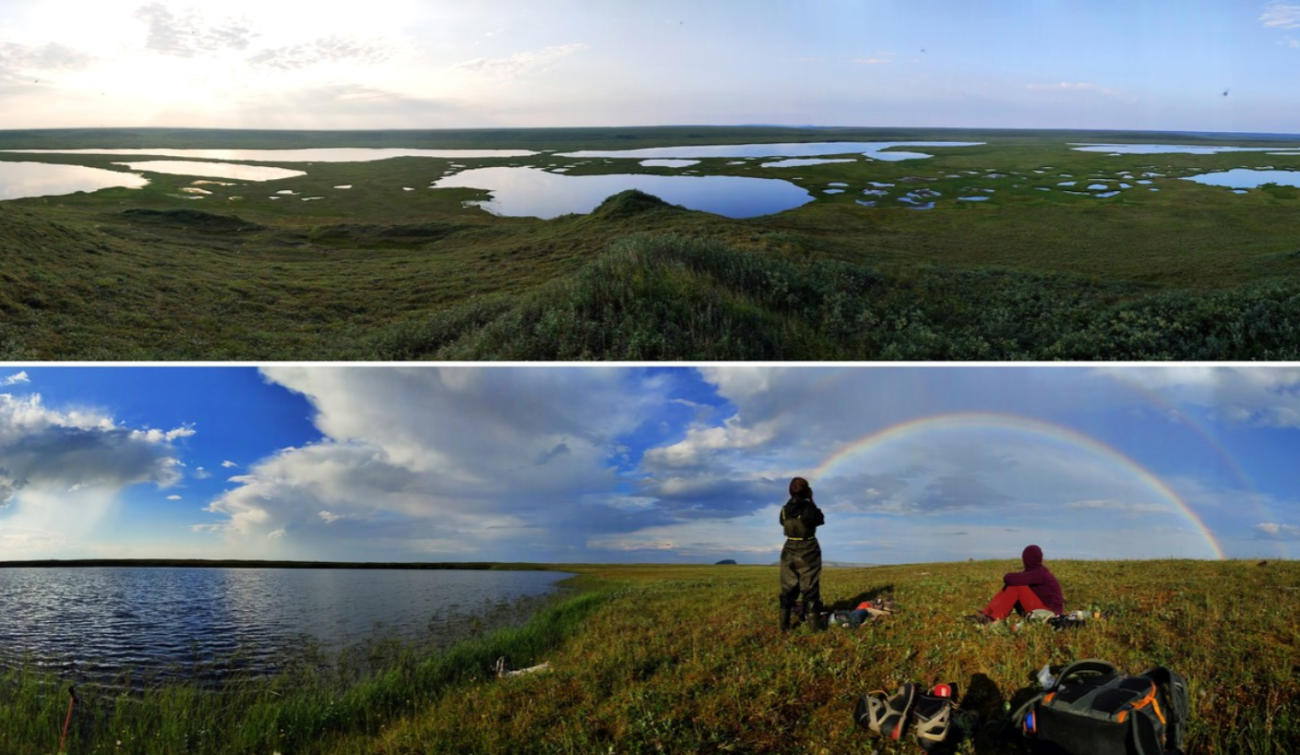
Author of photographs: Sadchikov I.P.
Analysis of the variability of biological communities inhabiting thermokarst lakes is important for assessing the degree of transformation of the Arctic ecosystem under the influence of climate change. When permafrost thaws, a gradual change in size occurs, and with it, the hydrology of tundra reservoirs. Environmental conditions changing during these processes have a significant impact on aquatic biota. The question arises: what is the variability of communities of different ecological and size groups of organisms during the development of a thermokarst reservoir?
Scientists from the A.N. Severtsov Institute of Ecology and Evolution RAS (Moscow) together with colleagues from M.V. Lomonosov Moscow State University performed a comprehensive analysis of the communities of bottom and planktonic invertebrates in lakes of the Lena River delta. In three hydrological types of thermokarst reservoirs, the fauna of microbenthos (testate amoebas), zooplankton and meiobenthos (copepods and cladocerans), as well as macrozoobenthos (oligochaete worms, mollusks, amphipods and insect larvae) were studied. The consistent variability in the structure of aquatic communities during the development of a thermokarst reservoir from a small polygonal pond to a large deep lake is described. It has been shown that the number of species of multicellular organisms is higher in lakes than in polygonal ponds. This is due to freezing to the bottom of small reservoirs in winter, which leads to the death of many organisms. The species richness of testate amoebae, which form persistent resting stages, is, on the contrary, higher in polygonal ponds overgrown with mosses and sedges. This fact is explained by the fact that the group is confined to deposits of plant remains. During the formation of communities of small organisms (testate amoebas and microcrustaceans), with life cycles lasting several times less than the summer season, the temperature factor was significant, varying over time intervals of weeks and months, as well as the acidity of the environment, changing interannually. For insect larvae that predominate on the bottom, with a development cycle of up to six months, all key factors varied over the range of a year or more.
Global climate change primarily affects organisms that subtly respond to short-term measurements of environmental conditions. Thus, the first signal of changes in the ecosystem of Arctic lakes will be restructuring of communities of testate amoebae and microcrustaceans. Since most species of testate amoebae have wide ranges, it will be easier to notice changes in the composition of microcrustaceans that are more narrowly distributed. It is likely that copepods and cladocerans can be one of the main indicator groups when assessing the transformation of an ecosystem under a changing climate.
The research was supported by the Russian Science Foundation grant No. 23-24-00054.
Chertoprud E.S., Novichkova A.A., Tsyganov A.N., Vorobjeva L.V., Esaulov A.S., Krylenko S.V., Mazei Y.A. 2023. Species diversity and driving factors of benthic and zooplanktonic assemblages at different stages of thermokarst lake development: a case study in the Lena River delta (Middle Siberia)
// Diversity. 15(4), 511. https://doi.org/10.3390/d15040511
Related materials:
Ministry of Education and Science: “Biologists have discovered animals whose behavior may
serve as a signal of climate change”
